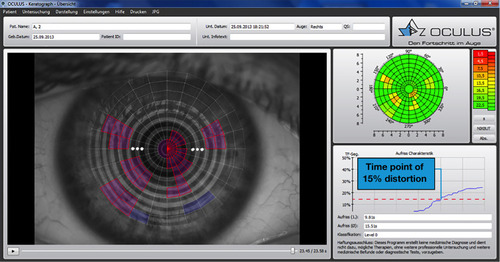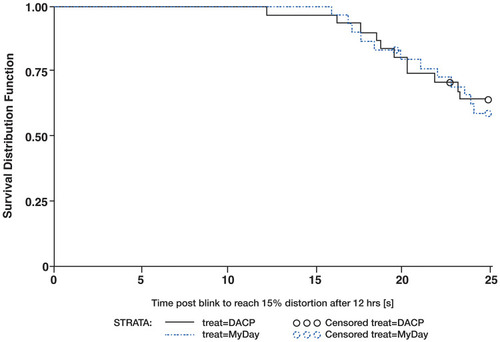Figures & data
Figure 1 Graphic of theoretical Placido ring distortions appearing after last blink (left: ideal ring reflection, middle: area with gaps in the projected ring structure, right: wave-like distortions). The red rings highlight areas where distortions (dewetting) has occurred.

Table 1 Specifications of Nelfilcon A and Stenfilcon A Daily Disposable Silicone Hydrogel Soft Contact Lenses
Figure 3 Screenshot of the analyzing software (LEFT: purple segments = objectively detected, blue segments = added by investigator, RIGHT wettability map and function segments over time).

Figure 4 Kaplan–Meier analysis of time post-blink required to reach 15% distortion after 12 hours of lens wear.

Table 2 Time Post-Blink to Reach 15% Distortion of the Projected Rings After 12 Hours in Subjects Who Reached 15% Distortion
Table 3 Mean Break-Up Speed at 15 Sec Post-Blink (% Distortion/Sec) After 12 Hours of Wear of Nelfilcon A and Stenfilcon A Contact Lenses

